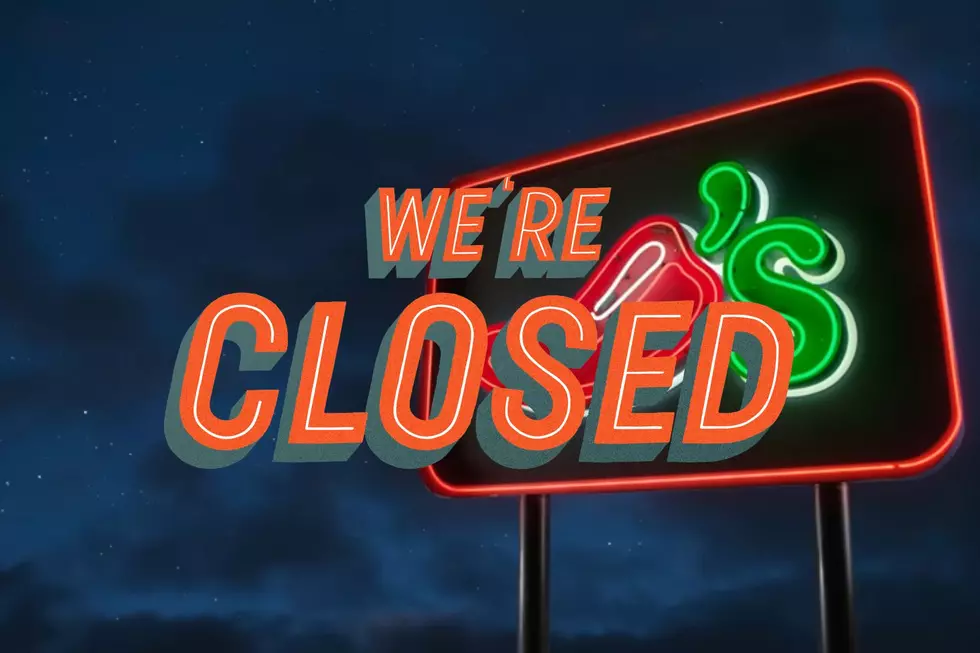
Heads Up Southern Utah! This Might Crash Through Your Roof
Yesterday NASA admitted that there are thousands of pounds of space junk floating in orbit around our lovely planet.
In the past 60 years or so there have been more than 6,000 space missions and in large part, those missions jettisoned their leftover "junk," things like used batteries, waste and broken industrial parts.
According to Axios, there are more than 11,000 pieces of this "space junk" hurtling at more than 17,000-miles per hour around Earth.
And sometimes the orbit of this junk deteriorates and it comes crashing down.
For instance, a couple of weeks ago a battery pallet from the International Space Station survived the burnup into our atmosphere and crashed through the roof of a house in Florida, narrowly missing the residents, who were home at the time.
However, NASA assures everyday citizens like you and I that the odds of a piece of space junk surviving reentry and actually striking a man-made object (or a man or woman) are extremely low.
Here's the math:
- The odds of space junk striking one human are about 1 in 14, or 7 percent.
- There are approximately 8 billion people on planet Earth.
- Therefore, the odds of a piece of space junk striking you are 1 in 112 billion, or about 0.00000009 percent chance.
- The odds are based on predictions for the next 10 years when more and more missions will head to space.
- As of today, no one has ever been killed by space junk.
- The incident in Florida implies that it will happen sooner or later.
We have enough to worry about with wars in the Middle East and Ukraine, soaring inflation and interest rates, and elephants escaping in Montana.
This one I think we can let go. Until that day when it happens.

Unsolved Mystery: Deaths Of Sally And Duane Francom Remain Unexplained
There's an update on the elderly couple that was found dead a couple of months ago in separate rooms in their house in American Fork, Utah.
Authorities have ruled the deaths of an elderly American Fork couple whose bodies were found in their home this year as undetermined. In January, police were called to do a welfare check at the home of Sally and Duane Francom, both 84. Once inside, officers found them dead in separate rooms. Investigators say there was no evidence of trauma or anything else that would have caused their deaths, such as carbon monoxide poisoning. American Forks police say the case is closed and the investigation has stopped.
In other words, no one knows why they died, they're not sure how they died (except there was no trauma), and they're closing the book on the case forever.
What makes the story even more sad is the fact that nobody thought to check on the older couple for more than a month (maybe two).
Did they not have any kids or grandkids? Were they members of their local church community? Did they have any friends or loved ones that wondered about them?
We should take this as a lesson.
According to statistics compiled by Meta-Gallup, one in four adults feels lonely often. More than half of people surveyed admitted to feeling lonely at least occasionally.
United States Surgeon General Vivek H. Murthy warns that "Loneliness and isolation represent profound threats to our health and well-being."
Murthy counters that with the idea that we each have the power to combat this epidemic of loneliness: "We have the power to respond. By taking small steps every day to strengthen our relationships, and by supporting community efforts to rebuild social connection, we can rise to meet this moment together. We can build lives and communities that are healthier and happier. And we can ensure our country and the world are better poised than ever to take on the challenges that lay ahead. Our future depends on what we do today."
There's a cool website called Love For Our Elders that is just one of many charities out there trying to make a difference, with their idea being to write letters to the lonely.
See if you can make a difference today!
Maybe the Francoms just expired of natural causes (whatever that means). Or maybe they died of loneliness.
We'll never know, but maybe we can keep it from happening again in our neck of the woods.

LOOK: Major US city skylines in photos, then and now
Gallery Credit: Stacker
LOOK: 20 photos of shipwrecks from WWI and WWII
Gallery Credit: Elias Sorich


